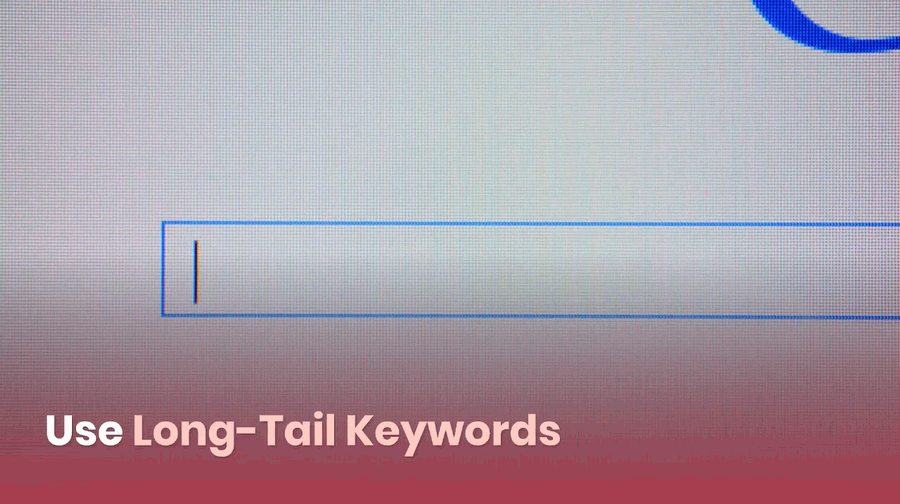You have a great product or service, but no one is buying it. Why? You still need to do your research. It would be best to start by improving your SEO ranking to increase your sales and revenue. This blog post will teach you 10 different ways that are all proven to work so that you can rank higher in the search engine results pages (SERPs).
Introduction
It’s no secret that to be successful online; you need a website. And for your website to be successful, it needs to rank high in the search engine results pages (SERPs). According to recent studies, over 90% of web traffic comes from Google, so if you want your business to succeed, you must ensure you’re showing up in the top few results.

You have a great product or service, but no one is buying it. Why?

You still need to do your research. It will help if you improve your SEO ranking to increase your sales and revenue. This blog post will teach you ten different ways that are all proven to work so that you can rank higher in the search engine results pages (SERPs).
But don’t worry – improving your SEO ranking doesn’t have to be complicated. Many of these tips are quick and easy to implement. And once you start seeing results, you’ll be glad you made an effort!
Now let’s get started.
Tip #01: Optimize Your Pages for Rankings
One of the most important things you can do to improve your SEO ranking is to optimize your pages for orders. It means ensuring that your title, meta descriptions, and header tags are all correctly written and formatted.
Title Tags

Your title tag is one of the essential parts of your page, as it’s what appears for each result on the SERP. Make sure that you’re using a title tag with 70 characters or less and that it includes your keyword once (and only once).
Meta Descriptions

You want to ensure that all your meta descriptions are 150-160 characters long. These are the snippets of text that appear under your title tag on the SERP, and they’re an excellent opportunity to entice people to click through to your page. You should also include your keyword in at least one meta description.
Header Tags

The header tags are the H-tags (Html Header Tags) that you see at the top of your web page. There are six different header tags, and you should use the one that corresponds to the level of importance of the content on your page. For example, if your main keyword is in the title tag, you would use the H-tag for Heading One.
Tip #02: Publish High-Quality Content

Google focuses on providing the best possible user experience, and one of the ways they do this is by ranking high-quality content higher than low-quality content. You need to publish informative and engaging content to improve your SEO ranking.
Tips for Publishing High-Quality Content:
- Include original research and data
- Write in a clear, concise, and easy-to-read style
- Make sure your content is up-to-date and relevant
- Use images, infographics, and videos to break up the text and add visual interest
- Structure your content using headings and subheadings
- Incorporate multimedia elements such as quotes, interviews, and case studies
- Be sure to provide value – don’t just include links back to your website; instead, offer actionable tips that readers can apply in their own lives or on their websites.
Tip #03: Optimize Your Website For Mobile Users

Nowadays, more searches are happening on mobile devices than desktops. And most of those searches are coming from Google’s instant search feature – if you don’t optimize your site for mobile devices, you could miss out! However, it’s not enough to have a mobile-friendly website. It would help if you also made sure that all of your content is readable on smaller screens and that your buttons and links are easy to click.
Tip #04: Publish Fresh Content Regularly

Google loves fresh content, so if you want to rank higher in the search engine results pages (SERPs), you need to publish new content regularly. It could be in the form of blog posts, articles, videos, or even infographics.
> How to write an SEO blog post
Ideally, it would be best if you aimed to publish at least one fresh content per week. But if that’s not possible for you, try to post something every other week. And make sure you’re not spamming your audience – only publish valuable and relevant content.
Tip #05: Use Long-Tail Keywords

More people will click on your link when you rank higher in the search engine results pages (SERPs). That said, if you don’t have any keywords or key phrases in your content, you will get very few clicks.
Long-tail keywords are the best to use when optimizing your content because they usually have less competition and will get more targeted traffic from Google’s daily searches. For example, if someone is searching for “online marketing,” there is a lot of competition, but if someone types in just “online marketing strategies,” there is much less competition.
Tip #06: Use Schema Markup to Improve CTRs

Schema markup allows search engines like Google and Bing to understand your website content better and give you a higher ranking in the SERPs. If you’re unfamiliar with schema markup, it’s simply a way to add structured data like microdata, RDFa, or JSON-LD.
Now, this doesn’t mean you should throw schema markup on your website willy-nilly and hope it works – remember that Google ranks pages based on relevancy! It would be best if you focused on adding schema markup highly relevant to your specific industry.
Tip #07: Keep Your URLs Short and Sweet

Regarding SEO, most experts will tell you that short URLs are better than long ones because they’re easier for users and search engines alike to remember! A good URL should be no more than 100 characters in length – anything beyond that, and you’re asking for trouble.
Plus, shorter URLs tend to have a higher click-through rate (CTR) because they’re easier to read and understand. So if you want people to visit your website, make sure your URLs are short and sweet!
Tip #08: Optimize Your Images

Whenever you upload an image to your website, you should always add a relevant “alt tag” along with the title text because these tags tell search engines about the pictures. It helps improve both the CTR and relevancy of your content in the SERPs!
You also need to make sure not to use too many images on one page – Google doesn’t like loading times to be too slow, so if you have too many pictures, your page will likely rank lower in the search engine results pages (SERPs)
Tip #09: Improve Your Site’s Loading Speed

Along with using fewer images, another way to improve your site’s loading speed is by optimizing your code and removing unnecessary scripts or plugins. Another way to improve your site’s speed is using a content delivery network (CDN) like Cloudflare.
Tip #10: Use Social Media to Build Links

Social media can be a great way to build links to your website, which will help improve your SEO ranking. The best way to do this is by creating valuable content that people will want to share on their social media channels.
You can also use social media ads to generate traffic to your website, but make sure you’re targeting the right audience!
You can see that improving your website’s SEO ranking is possible with hard work and dedication. Remember these ten tips next time you optimize content for search engines!
Conclusion
SEO is challenging, but with some hard work and dedication, you can improve your website’s ranking in the search engine results pages (SERPs). Remember these ten tips next time you optimize content for search engines!
If you’re looking for more SEO information, check out our other blog posts!

